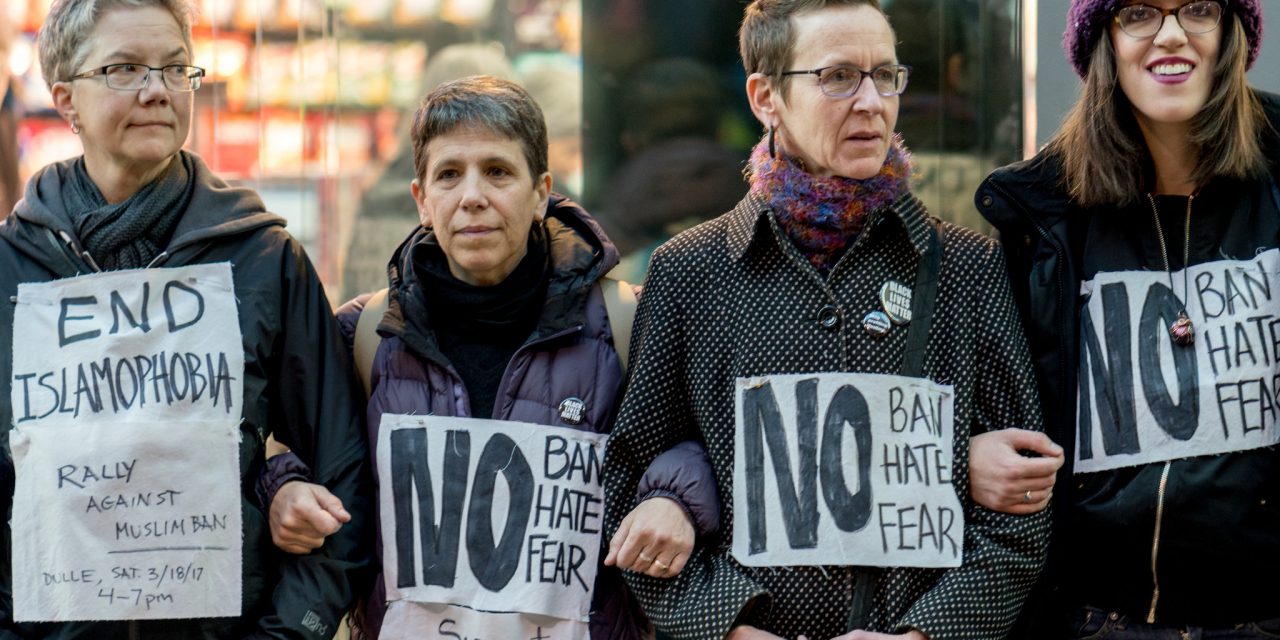The Supreme Court has decided to hear the Travel Ban case when its fall session begins in October 2017. In the meantime, the Court will allow the administration to implement parts of President Trump’s second executive order (EO-2), which bans the entry of nationals of Iran, Libya, Somalia, Sudan, Syria, and Yemen from the United States for at least 90 days and suspends the admission of all refugees for 120 days.
In a narrow decision, the Court ruled that the government can only enforce the travel ban against foreign nationals who do not have “a credible claim of a bona fide relationship with a person or entity in the United States.”
What this means is that individuals from the six countries will be permitted to enter the United States if they have a “close familial relationship” with someone already here or if they have a “formal, documented” relationship with an American entity formed “in the ordinary course” of business. However, the Court said that such relationships cannot be established for the purpose of avoiding the travel ban. The government will likely begin applying the travel ban in the limited fashion permitted by the Supreme Court on June 29, 2017.
Who is likely to be allowed to enter the United States?
- Individuals who have valid immigrant or non-immigrant visas issued on or before June 26, 2017.
These individuals are not included in the travel ban. - Individuals with visas coming to live or visit with family members.
The Court’s order is clear that individuals who “wish [] to enter the United States to live with or visit a family member” have close familial relationships. The Court used both a spouse and a mother-in-law as examples of qualifying relationships, but it is unclear whether more distant relatives would qualify. - Students who have been admitted to a U.S. university, workers who have accepted offers of employment with U.S. companies, and lecturers invited to address an American audience.
The Court provided these three examples of individuals who have credible claims of a bona fide relationship to an American entity. - Other types of business travelers.
It is unclear whether individuals with employment-based visas that do not require a petitioning employer will be able to demonstrate the requisite relationship with a U.S. entity. - Refugees.
Most refugees processed overseas have family or other connections to the United States including with refugee resettlement agencies. The Court ruled that such individuals may not be excluded even if the 50,000 cap on refugees has been reached or exceeded.
Who may have trouble entering the United States?
- Individuals who form bona fide relationships with individuals or entities in the United States after June 26, 2017.
The Court’s decision is not clear on whether it is prospective or retrospective only. Individuals who form such relationships to avoid the travel ban are barred from entering. - Tourists.
Nationals of the designated countries who are not planning to visit family members in the United States and who are coming for other reasons (including sight-seeing) may be barred from entering.
The real test will come as the government implements the order, which will be under intense scrutiny by Muslim, immigrant and refugee rights organizations. Undeniably, the Supreme Court’s decision has opened the door for more confusion and litigation in the months to come.
Photo by Lorie Shaull
FILED UNDER: Donald Trump, featured, Muslim Ban, Supreme Court


